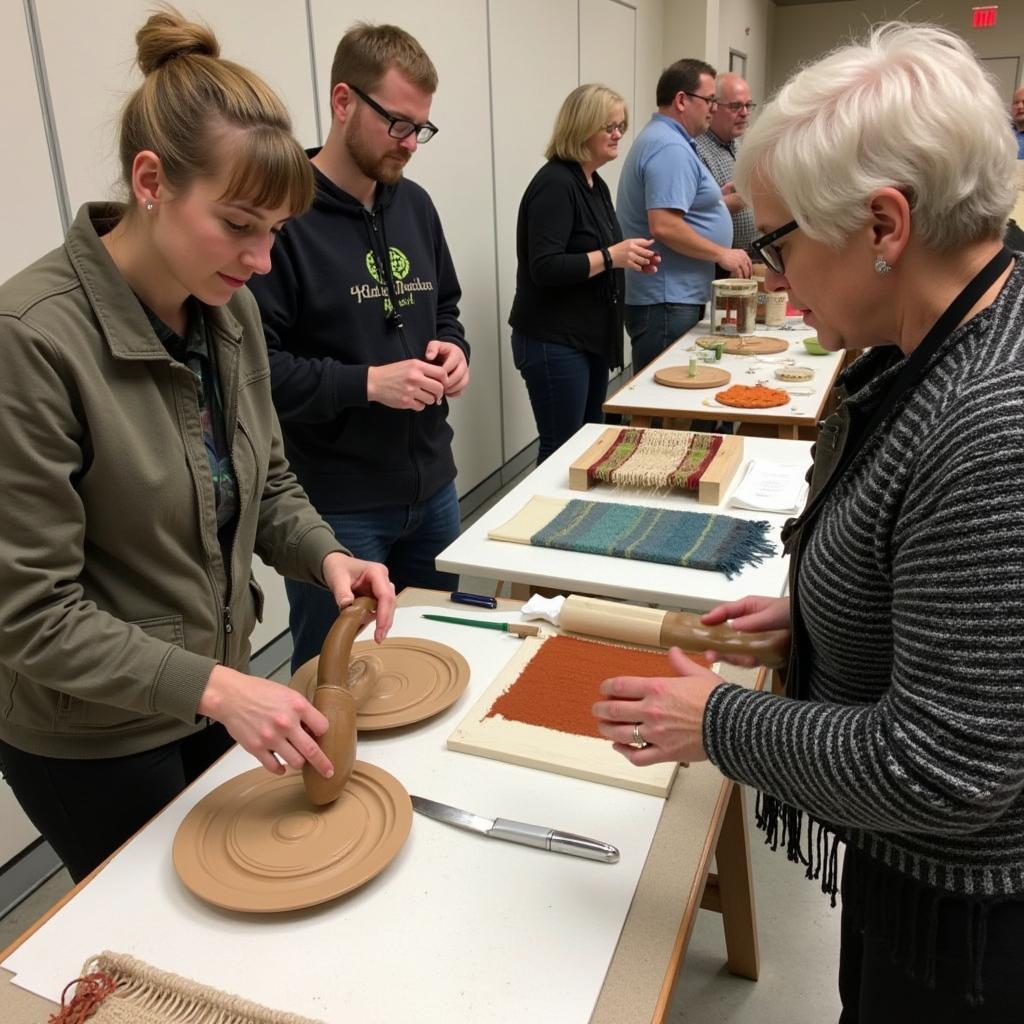Teaching Art Overseas: Sharing Your Passion With the World
Teaching Art Overseas offers a unique and rewarding opportunity to merge your love for art with your desire to explore the world. Imagine yourself inspiring eager students in a vibrant new setting, sharing your knowledge and passion for art while immersing yourself in a different culture. Whether you’re a seasoned art educator or a recent graduate, teaching art abroad can be an enriching experience that broadens your horizons both personally and professionally.
Why Consider Teaching Art Overseas?
Teaching art overseas isn’t just about imparting artistic skills; it’s about fostering creativity, cross-cultural understanding, and personal growth. Here are some compelling reasons to consider this fulfilling path:
-
Embrace a Global Perspective: Immersing yourself in a new culture exposes you to different artistic traditions, techniques, and perspectives, enriching your own artistic practice and teaching methods.
-
Make a Meaningful Impact: Share your knowledge and passion for art with students eager to learn, inspiring a new generation of artists and fostering their creative potential.
-
Develop New Skills: Navigating a new educational system and adapting your teaching style to a different cultural context enhances your adaptability, communication, and problem-solving skills.
-
Boost Your Resume: International teaching experience makes your resume stand out, showcasing your adaptability, cultural sensitivity, and commitment to educational excellence.
-
Experience Personal Growth: Stepping outside your comfort zone and embracing new challenges fosters personal growth, self-discovery, and a deeper understanding of yourself and the world.
Finding the Right Teaching Position
Finding the perfect teaching position abroad requires careful research and planning. Here’s a step-by-step guide to help you navigate the process:
-
Determine Your Ideal Location: Consider factors like language, culture, cost of living, and visa requirements when choosing a country that aligns with your personal and professional goals.
-
Research Educational Institutions: Explore various options, from international schools and universities to community centers and non-profit organizations, to find the best fit for your teaching style and experience.
-
Network with Other Educators: Connect with other art teachers who have experience teaching abroad. Their insights, advice, and personal experiences can prove invaluable during your job search.
-
Prepare Your Application Materials: Tailor your resume and cover letter to highlight relevant skills and experience. Consider obtaining TEFL/TESOL certification to strengthen your application, especially if you’re interested in teaching English as a foreign language alongside art.
-
Ace the Interview: Practice answering common interview questions and be prepared to discuss your teaching philosophy, experience with diverse learners, and adaptability to new environments.
Essential Tips for Success
Successfully teaching art overseas requires more than just artistic talent; it demands cultural sensitivity, adaptability, and a genuine passion for teaching. Here are some essential tips to ensure a rewarding experience:
-
Learn About the Local Culture: Invest time in understanding the customs, traditions, and social etiquette of your host country to foster respectful and meaningful interactions.
-
Be Open to New Perspectives: Embrace the opportunity to learn from your students and colleagues, recognizing that different cultures may have different approaches to art and education.
-
Be Patient and Flexible: Adapting to a new environment takes time. Be patient with yourself and your students as you navigate cultural differences and adjust to a new way of life.
-
Build Relationships: Cultivate strong relationships with your students, colleagues, and local community members to create a supportive and enriching experience.
-
Embrace the Adventure: Teaching art overseas is an incredible adventure. Embrace the challenges, celebrate the triumphs, and cherish the memories you create along the way.
Conclusion
Teaching art overseas is a life-changing experience that allows you to share your passion for art with the world while embarking on a journey of personal and professional growth. By embracing the challenges and opportunities that come with teaching abroad, you can make a lasting impact on your students’ lives and your own.
FAQs
1. What qualifications do I need to teach art overseas?
While specific requirements vary depending on the country and institution, most teaching positions require a bachelor’s degree in art education or a related field. Teaching experience and TEFL/TESOL certification can be advantageous.
2. How can I find funding for teaching art abroad?
Explore funding opportunities like Fulbright grants, teaching assistantships, and programs offered by international organizations that support arts education.
3. What are the most common challenges of teaching art overseas?
Common challenges include cultural differences, language barriers, adapting to a new educational system, and homesickness. Thorough research and preparation can help mitigate these challenges.
4. How can I make the most of my teaching experience abroad?
Embrace cultural immersion, build relationships, be open to new perspectives, and document your journey to create lasting memories.
5. What should I do if I encounter difficulties while teaching abroad?
Don’t hesitate to seek support from your school administration, fellow teachers, or your program coordinator. Most institutions have resources and support systems in place to assist teachers.
Need help getting started? Contact us at Phone Number: 02462573573, Email: [email protected] or visit us at Savico Megamall, 7-9 Đ. Nguyễn Văn Linh, Gia Thụy, Long Biên, Hà Nội 10000, Việt Nam. We have a 24/7 customer support team ready to answer your questions.


